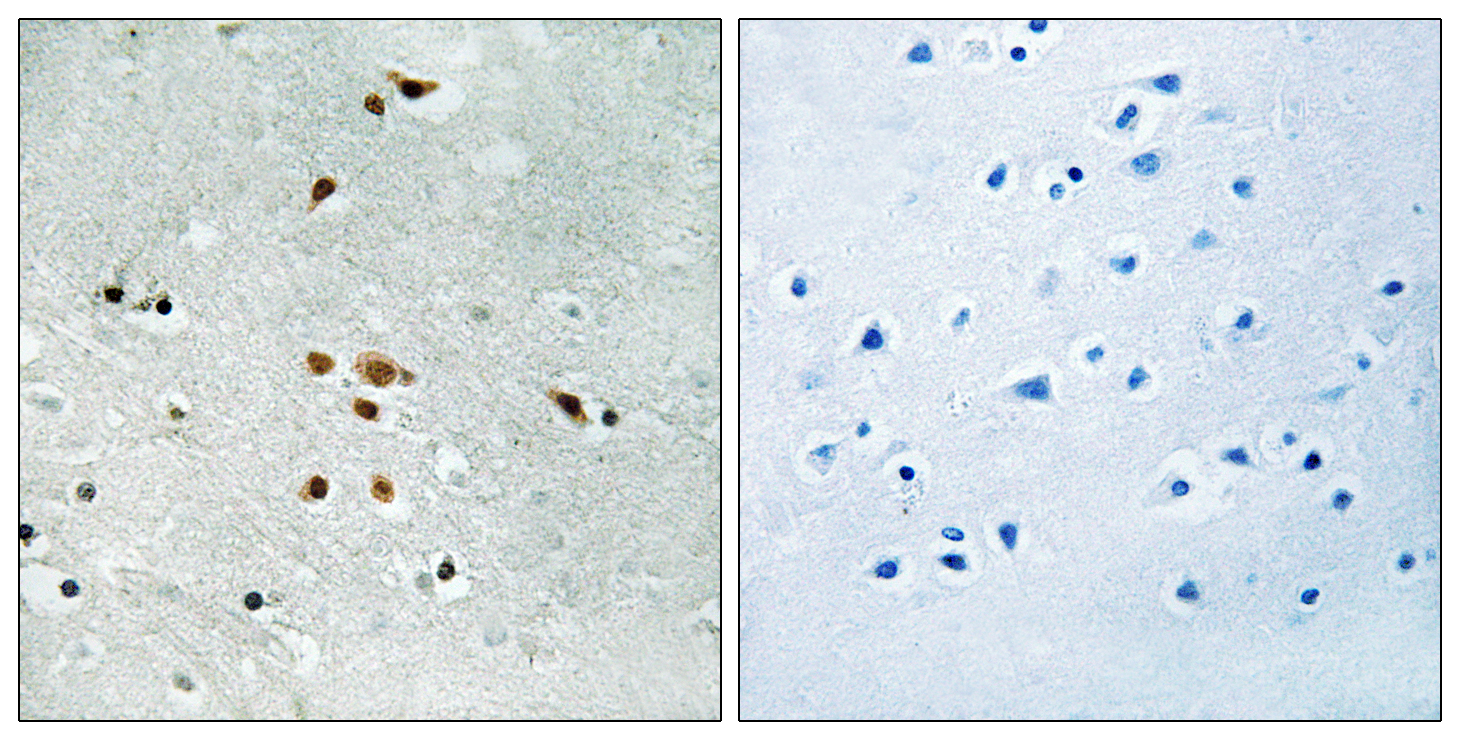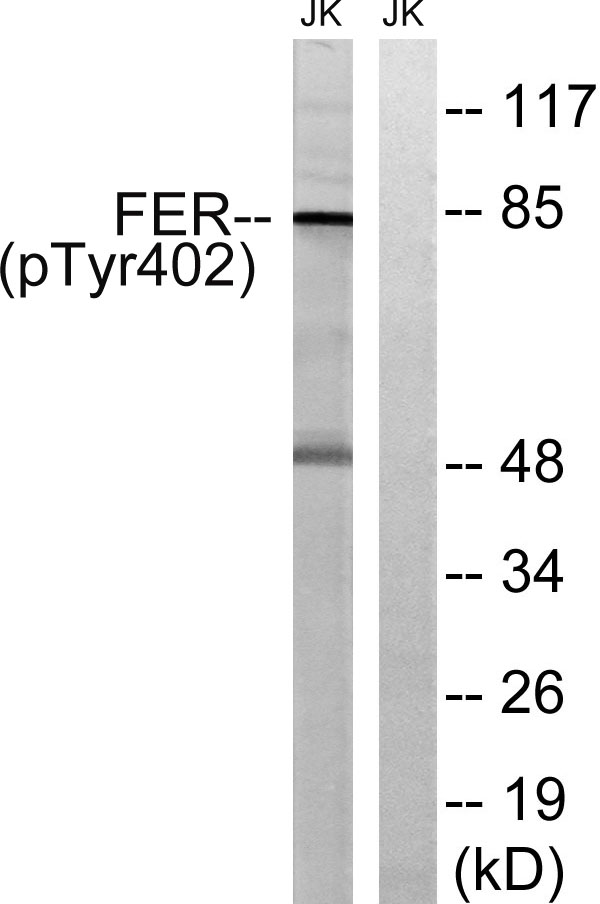Fer (phospho Tyr402) Polyclonal Antibody
- Catalog No.:YP0783
- Applications:WB;IHC;IF;ELISA
- Reactivity:Human;Mouse
- Target:
- FER
- Fields:
- >>Adherens junction
- Gene Name:
- FER
- Protein Name:
- Tyrosine-protein kinase Fer
- Human Gene Id:
- 2241
- Human Swiss Prot No:
- P16591
- Mouse Gene Id:
- 14158
- Mouse Swiss Prot No:
- P70451
- Immunogen:
- The antiserum was produced against synthesized peptide derived from human FER around the phosphorylation site of Tyr402. AA range:371-420
- Specificity:
- Phospho-Fer (Y402) Polyclonal Antibody detects endogenous levels of Fer protein only when phosphorylated at Y402.
- Formulation:
- Liquid in PBS containing 50% glycerol, 0.5% BSA and 0.02% sodium azide.
- Source:
- Polyclonal, Rabbit,IgG
- Dilution:
- WB 1:500 - 1:2000. IHC 1:100 - 1:300. ELISA: 1:20000.. IF 1:50-200
- Purification:
- The antibody was affinity-purified from rabbit antiserum by affinity-chromatography using epitope-specific immunogen.
- Concentration:
- 1 mg/ml
- Storage Stability:
- -15°C to -25°C/1 year(Do not lower than -25°C)
- Other Name:
- FER;TYK3;Tyrosine-protein kinase Fer;Feline encephalitis virus-related kinase FER;Fujinami poultry sarcoma/Feline sarcoma-related protein Fer;Proto-oncogene c-Fer;Tyrosine kinase 3;p94-Fer
- Observed Band(KD):
- 85kD
- Background:
- The protein encoded by this gene is a member of the FPS/FES family of non-transmembrane receptor tyrosine kinases. It regulates cell-cell adhesion and mediates signaling from the cell surface to the cytoskeleton via growth factor receptors. Alternative splicing results in multiple transcript variants. A related pseudogene has been identified on chromosome X. [provided by RefSeq, Apr 2015],
- Function:
- catalytic activity:ATP + a [protein]-L-tyrosine = ADP + a [protein]-L-tyrosine phosphate.,function:Tyrosine kinase of the non-receptor type. Probably performs an important function, perhaps in regulatory processes such as cell cycle control.,similarity:Belongs to the protein kinase superfamily. Tyr protein kinase family. Fes/fps subfamily.,similarity:Contains 1 FCH domain.,similarity:Contains 1 protein kinase domain.,similarity:Contains 1 SH2 domain.,subcellular location:Associated with the chromatin.,tissue specificity:Expressed in a variety of lymphoid cell lines.,
- Subcellular Location:
- Cytoplasm. Cytoplasm, cytoskeleton. Cell membrane; Peripheral membrane protein; Cytoplasmic side. Cell projection. Cell junction. Membrane; Peripheral membrane protein; Cytoplasmic side. Nucleus. Cytoplasm, cell cortex. Associated with the chromatin. Detected on microtubules in polarized and motile vascular endothelial cells. Colocalizes with F-actin at the cell cortex. Colocalizes with PECAM1 and CTNND1 at nascent cell-cell contacts.
- Expression:
- Isoform 1 is detected in normal colon and in fibroblasts (at protein level). Isoform 3 is detected in normal testis, in colon carcinoma-derived metastases in lung, liver and ovary, and in colon carcinoma and hepato carcinoma cell lines (at protein level). Isoform 3 is not detected in normal colon or in normal fibroblasts (at protein level). Widely expressed.
- June 19-2018
- WESTERN IMMUNOBLOTTING PROTOCOL
- June 19-2018
- IMMUNOHISTOCHEMISTRY-PARAFFIN PROTOCOL
- June 19-2018
- IMMUNOFLUORESCENCE PROTOCOL
- September 08-2020
- FLOW-CYTOMEYRT-PROTOCOL
- May 20-2022
- Cell-Based ELISA│解您多样本WB检测之困扰
- July 13-2018
- CELL-BASED-ELISA-PROTOCOL-FOR-ACETYL-PROTEIN
- July 13-2018
- CELL-BASED-ELISA-PROTOCOL-FOR-PHOSPHO-PROTEIN
- July 13-2018
- Antibody-FAQs
- Products Images

- Immunohistochemistry analysis of paraffin-embedded human brain, using FER (Phospho-Tyr402) Antibody. The picture on the right is blocked with the phospho peptide.

- Western blot analysis of lysates from Jurkat cells treated with starved 24h, using FER (Phospho-Tyr402) Antibody. The lane on the right is blocked with the phospho peptide.



